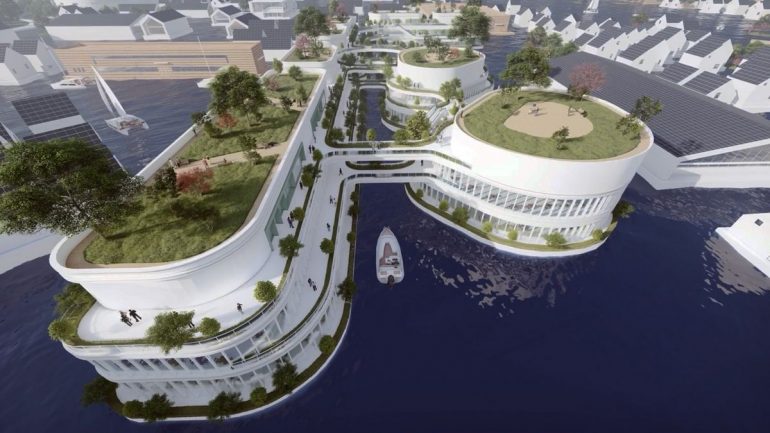Thanks to human-caused climate change, the global mean sea level has been constantly rising. Evidence suggests sea level along the US coastline will rise 10 to 12 inches by 2050. If global warming goes unchecked, experts claim there will come a time when oceans will end up swallowing many islands and even continents. While extensive efforts are being made worldwide to slow down climate change, a Japanese startup has already started preparing for doomsday. The company called N-Ark has revealed plans for an incredibly ambitious floating city that will protect its inhabitants from the rising oceans and other calamities.

Named Dogen City, the circular-shaped city will be designed in a way that it will be able to cope with any climate change-related sea rises and withstand severe weather and even tsunamis. Inspired by Noah’s Ark, the huge floating metropolis would measure 4 km (about 2.5 miles) in circumference and have enough space to host up to 40,000 people. According to the Japanese firm, Dogen City will be capable of supporting approximately 10,000 full-time inhabitants along with 30,000 tourists visiting at any time.

While the details at the moment are sparse, N-Ark claims that Dogen City will be fully self-sustaining. The mega project would be arranged into three distinct areas, which include the habitable ring that will contain the main housing zone. Residents will be able to traverse the city within an hour.

Additionally, the city will also have an undersea data center which would be naturally cooled by the sea and contain city management and medical research facilities. The floating city will also get food production facilities, a school, sports areas, hospitals, parks, stadiums, hotels, and offices.

N-Ark says the floating metropolis would use an innovative cultivation technology using seawater, which will help it produce 7,000 tons of food annually. Furthermore, the company has done some calculations and claims there would be roughly 530,000 gallons of water consumption per year and around 3,288 tons of annual garbage disposal for the city.

In addition to that, 22,265,000 kW of power would be generated to sustain the city. However, N-Ark has not revealed the possible location of the buoyant city, nor has it said anything about the budget required to build something that big and complex. Yet, it has set itself a very ambitious timeline with an estimated completion of the project by 2030, which is very sketchy, to say the least.

